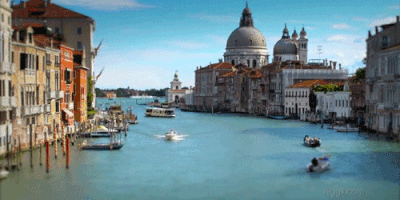Common description
The city of Shanghai is located at the mouth of the Yangtze River on the banks of its tributary - the Huangpu River.
As soon as Shanghai was not called at one time: Paris of the East, the Chinese Harlot, Queen of the East, the city of adventurers, players, sailors, opium traffickers and opium addicts, the city of child prostitution and slave child labor, the city of socialists, communists and revolutionaries of all stripes, the homeland of the Communist parties of China, the cradle of the Revolution and the birthplace of the Shanghai commune.
The history of this metropolis can be clearly divided into several large stages.
The first stage (1840 - 1949) is the centenary of Shanghai's rise due to opium, silk, slave labor in factories and a gigantic flow of foreign investment. Until now, Shanghai of the 20-30s is considered the site of the largest foreign investment in the world: the British alone have invested about 400 million pounds in the city. It was then that Shanghai literally became part of Western consciousness, like Paris or New York. Here are the statistics of Shanghai in the 1930s: 200 thousand workers employed in the largest production in Asia (many of them children who worked 12-13 hours a day seven days a week), 30 thousand prostitutes, hundreds of thousands of opiate addicted to opium (the smell of opium literally hung over some quarters of the city).
The second stage (1949 - 1989) began when the Communists came to power. Their task was to show by the example of Shanghai how communism can work. To some extent, they succeeded: eliminated prostitution, the opium trade, numerous ghettos and dens, implemented a program for the rehabilitation of opium addicts, destroyed child and slave labor. Along with this, the authorities destroyed most of the city’s economy - and Shanghai plunged forty years into a period of stagnation. But Shanghai here remained a radical city: during the Cultural Revolution, a Shanghai commune was created in the city, following the example of the Paris Commune of 1871. True, Shanghai existed even less than Paris — three weeks instead of two months, when the army put an end to it.
The third stage (1990 –––––––––––––––––––––––––––––––––––––––––––––––––– The third stage (1990 — today) marked the beginning of the city’s economic growth associated with plans to create a large economic zone in the Pudong area.
Today, Shanghai is China's largest economic center. The territory of the city, together with the surrounding areas, is allocated as an independent administrative unit of central subordination.
The population of the entire Shanghai municipality (6100 sq. Km) is 14 million people. Shanghai itself occupies 220 square kilometers with a population of 8 million people - this is one of the highest levels of population density in China and in the world.
Shanghai is one of the most important transport hubs in China and the largest port in the Pacific. The city has 2 international airports - Hongqiao and Pudong. Shanghai Railway Station is one of the largest and most modern in China. City transport is represented by metro, bus service and taxi.
What to visit:
Vaitan Embankment
Nankinlu Street
Garden and Bazaar Yu Yuan
Jade Buddha Temple
Hunkou park
TV Tower "Pearl of the East"
As soon as Shanghai was not called at one time: Paris of the East, the Chinese Harlot, Queen of the East, the city of adventurers, players, sailors, opium traffickers and opium addicts, the city of child prostitution and slave child labor, the city of socialists, communists and revolutionaries of all stripes, the homeland of the Communist parties of China, the cradle of the Revolution and the birthplace of the Shanghai commune.
The history of this metropolis can be clearly divided into several large stages.
The first stage (1840 - 1949) is the centenary of Shanghai's rise due to opium, silk, slave labor in factories and a gigantic flow of foreign investment. Until now, Shanghai of the 20-30s is considered the site of the largest foreign investment in the world: the British alone have invested about 400 million pounds in the city. It was then that Shanghai literally became part of Western consciousness, like Paris or New York. Here are the statistics of Shanghai in the 1930s: 200 thousand workers employed in the largest production in Asia (many of them children who worked 12-13 hours a day seven days a week), 30 thousand prostitutes, hundreds of thousands of opiate addicted to opium (the smell of opium literally hung over some quarters of the city).
The second stage (1949 - 1989) began when the Communists came to power. Their task was to show by the example of Shanghai how communism can work. To some extent, they succeeded: eliminated prostitution, the opium trade, numerous ghettos and dens, implemented a program for the rehabilitation of opium addicts, destroyed child and slave labor. Along with this, the authorities destroyed most of the city’s economy - and Shanghai plunged forty years into a period of stagnation. But Shanghai here remained a radical city: during the Cultural Revolution, a Shanghai commune was created in the city, following the example of the Paris Commune of 1871. True, Shanghai existed even less than Paris — three weeks instead of two months, when the army put an end to it.
The third stage (1990 –––––––––––––––––––––––––––––––––––––––––––––––––– The third stage (1990 — today) marked the beginning of the city’s economic growth associated with plans to create a large economic zone in the Pudong area.
Today, Shanghai is China's largest economic center. The territory of the city, together with the surrounding areas, is allocated as an independent administrative unit of central subordination.
The population of the entire Shanghai municipality (6100 sq. Km) is 14 million people. Shanghai itself occupies 220 square kilometers with a population of 8 million people - this is one of the highest levels of population density in China and in the world.
Shanghai is one of the most important transport hubs in China and the largest port in the Pacific. The city has 2 international airports - Hongqiao and Pudong. Shanghai Railway Station is one of the largest and most modern in China. City transport is represented by metro, bus service and taxi.
What to visit:
Vaitan Embankment
Nankinlu Street
Garden and Bazaar Yu Yuan
Jade Buddha Temple
Hunkou park
TV Tower "Pearl of the East"
Shanghai on map
+ 27°C











